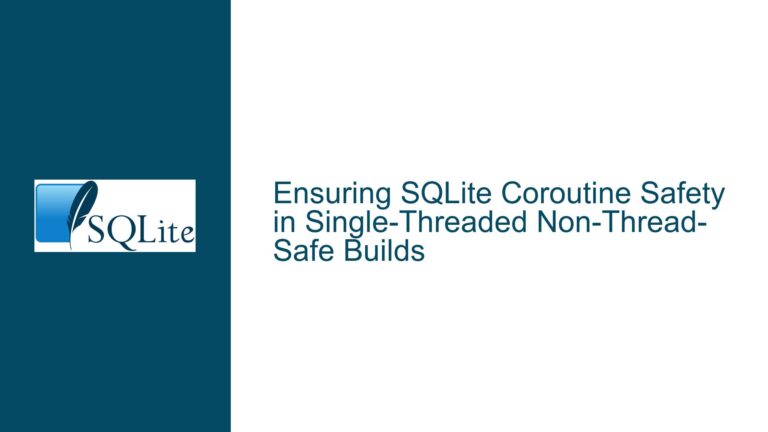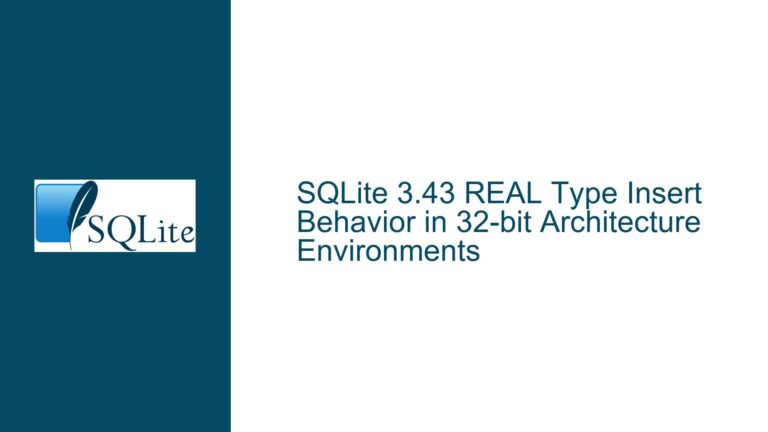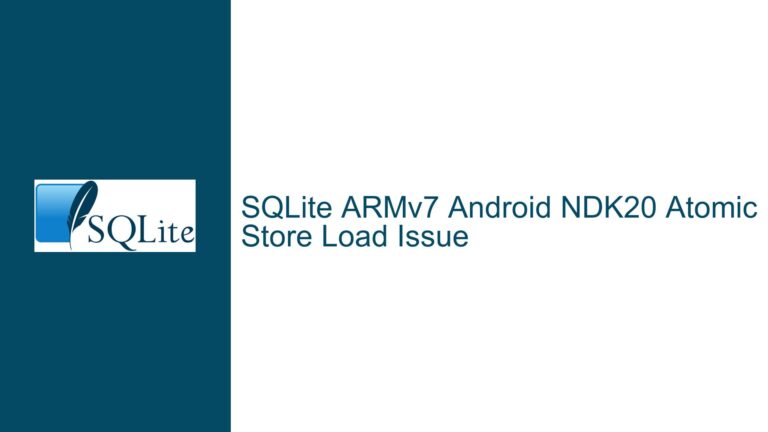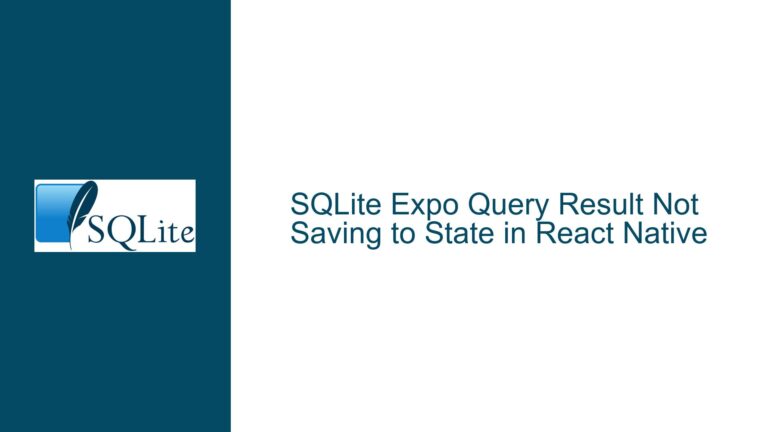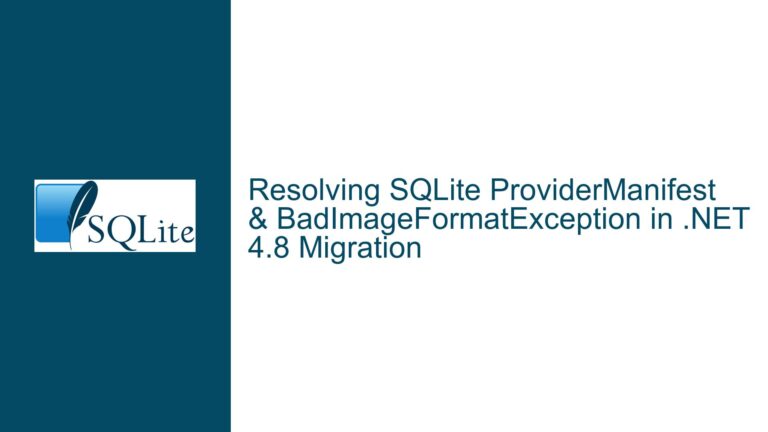SQLite Build Errors: Linenoise Fork Compatibility and Amalgamation Deprecation
Linenoise Fork Transition and Build Compatibility Challenges
The core issue arises from SQLite’s decision to replace the original Antirez-maintained linenoise library with a fork by msteveb in its command-line shell (CLI). Linenoise is a minimal readline replacement used for line-editing features in terminal-based applications. The switch introduced build errors for users who previously relied on the Antirez version, particularly when integrating SQLite with other tools (e.g., nftables) that still depend on the original linenoise API. This incompatibility stems from subtle differences in function signatures and behavioral changes between the two forks.
The problem is compounded by SQLite’s move to deprecate its prebuilt amalgamation package—a single-file distribution of the SQLite library and shell. The amalgamation has historically simplified integration into third-party projects by reducing build complexity. However, SQLite now encourages building from canonical source distributions, which introduces new configuration steps (e.g., explicitly specifying linenoise directories) and may disrupt existing workflows that depend on the amalgamation’s simplicity.
These changes create two distinct challenges:
- Dependency Conflicts: Projects using both SQLite and other tools leveraging the Antirez linenoise fork face conflicting header and symbol definitions during compilation.
- Build Process Fragmentation: Organizations accustomed to the amalgamation package must adapt to a more complex build pipeline involving configure scripts, makefiles, and optional dependencies like Tcl/Tk’s TEA (Tcl Extension Architecture).
Underlying Factors in SQLite’s Dependency and Build System Changes
The shift to msteveb’s linenoise fork was motivated by the need for cross-platform compatibility. The original Antirez linenoise lacks robust support for Windows consoles, limiting SQLite’s CLI functionality on Win32 systems. msteveb’s fork adds features like UTF-8 input handling, ANSI escape sequence support, and improved terminal detection—critical for modern cross-platform applications. However, this fork modifies the API in ways that break backward compatibility, such as renaming functions or altering struct definitions.
SQLite’s decision to deprecate the prebuilt amalgamation package stems from long-term maintainability goals. The amalgamation merges hundreds of source files into sqlite3.c and sqlite3.h, which simplifies distribution but complicates incremental builds and dependency tracking. By moving to a canonical source distribution, SQLite aims to streamline its build system, reduce reliance on third-party tools like TEA, and improve flexibility for platform-specific optimizations.
Key technical factors driving these changes include:
- Windows Console Limitations: The Antirez linenoise does not handle Win32 console input/output adequately, leading to issues like garbled text or missing line-editing features. msteveb’s fork addresses these through platform-specific abstractions.
- API Divergence: msteveb’s fork introduces
linenoiseHistoryAdd(vs. Antirez’slinenoiseHistoryAdd) and modifieslinenoiseClearScreento accept a terminal width parameter. These changes cause linker errors when mixing library versions. - Build System Modernization: The new configure-based build process automates platform detection, dependency resolution, and amalgamation generation, reducing manual intervention.
Resolving Build Conflicts and Adapting to Amalgamation Deprecation
To address linenoise-related build errors, developers must explicitly specify which fork to use during configuration. SQLite’s updated build system supports both Antirez and msteveb forks via the --with-linenoise=DIR flag. For example:
./configure --with-linenoise=/path/to/linenoise/source
This directive instructs the configure script to detect the library’s version and adjust compiler flags accordingly. If the Antirez fork is detected, the build system disables Win32-specific code paths to avoid unresolved symbols.
For projects requiring the amalgamation, SQLite still allows generating it manually:
make sqlite3.c
This command produces the amalgamated source, ensuring backward compatibility with existing workflows. However, long-term users should transition to canonical source builds by:
- Downloading the trunk tarball (
sqlite-trunk.tar.gz). - Running
./configurewith platform-specific flags (e.g.,--enable-allfor extended features). - Using
maketo compile the library and shell.
To mitigate dependency conflicts with other tools (e.g., nftables), consider these strategies:
- Isolate Linenoise Versions: Compile SQLite and conflicting tools into separate static binaries, ensuring each links to its own linenoise implementation.
- Symbol Namespacing: Use linker wrappers or preprocessor macros to alias functions (e.g.,
#define linenoiseHistoryAdd antirez_linenoiseHistoryAdd) when building SQLite against the Antirez fork. - Vendor the Fork: Embed msteveb’s linenoise directly into the project tree, overriding system-wide installations.
For Windows-specific builds, msteveb’s fork is essential. Developers should update their CI/CD pipelines to include Win32 console support and validate terminal interactions across platforms.
Finally, organizations reliant on the amalgamation should monitor SQLite’s release notes for deprecation timelines. While the prebuilt tarball will remain available temporarily, adopting the canonical build process now ensures smoother transitions. Use make sqlite3.c as part of your build pipeline to generate amalgamated sources on-demand, preserving optimization benefits without depending on upstream distribution.
By addressing dependency conflicts through explicit configuration and adapting build systems to handle amalgamation generation locally, developers can maintain compatibility with SQLite’s evolving ecosystem while leveraging improved cross-platform capabilities.

